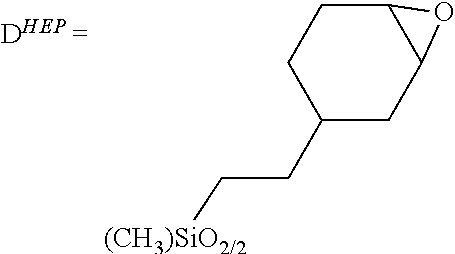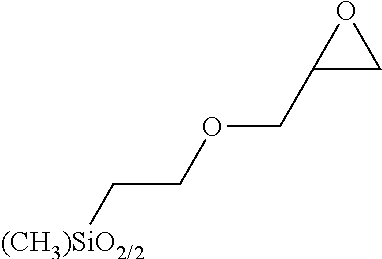BRIDGED FRUSTRATED LEWIS PAIRS AS THERMAL TRIGGER FOR REACTIONS BETWEEN Si-H AND EPOXIDE
a technology of frustrated lewis and thermal trigger, applied in the field of bridged frustrated lewis pair, can solve the problem that the reaction between epoxide/silyl hydride tends to be rapid, and achieve the effects of reducing the number of reactions, and improving the handling tim
- Summary
- Abstract
- Description
- Claims
- Application Information
AI Technical Summary
Benefits of technology
Problems solved by technology
Method used
Image
Examples
examples
[0067]Synthesis of B-FLP(1). Working in a glovebox, place in a Schlenk flask equipped with a magnetic stir bar tri(t-butyl)phosphine (200 milligrams (mg), 1.0 millimole (mmol), 1 equivalent (equiv)) and tris-pentafluorophenylborane (“BCF”) (500 mg, 1 mmol, 1 equiv) and dissolve the components in 10 milliliters (mL) of toluene. Seal the Schlenk flask and remove from the glovebox. Connect the Schlenk flask to a Schlenk line. Stir the contents of the Schlenk flask throughout the following step. Purge the Schlenk line with nitrogen and then bubble carbon dioxide through the line for two minutes. Open the Schlenk flask to the atmosphere of carbon dioxide and then replace the cap to the flask with a septum. Insert a needle through the septum to create an exit for the carbon dioxide gas and improve carbon dioxide circulation. After 5 minutes a white solid precipitates from the reaction mixture. Seal the flask and stir at room temperature for an additional hour. Move the flask to a glovebox...
PUM
| Property | Measurement | Unit |
|---|---|---|
| temperature | aaaaa | aaaaa |
| temperature | aaaaa | aaaaa |
| temperature | aaaaa | aaaaa |
Abstract
Description
Claims
Application Information
 Login to View More
Login to View More - R&D
- Intellectual Property
- Life Sciences
- Materials
- Tech Scout
- Unparalleled Data Quality
- Higher Quality Content
- 60% Fewer Hallucinations
Browse by: Latest US Patents, China's latest patents, Technical Efficacy Thesaurus, Application Domain, Technology Topic, Popular Technical Reports.
© 2025 PatSnap. All rights reserved.Legal|Privacy policy|Modern Slavery Act Transparency Statement|Sitemap|About US| Contact US: help@patsnap.com



